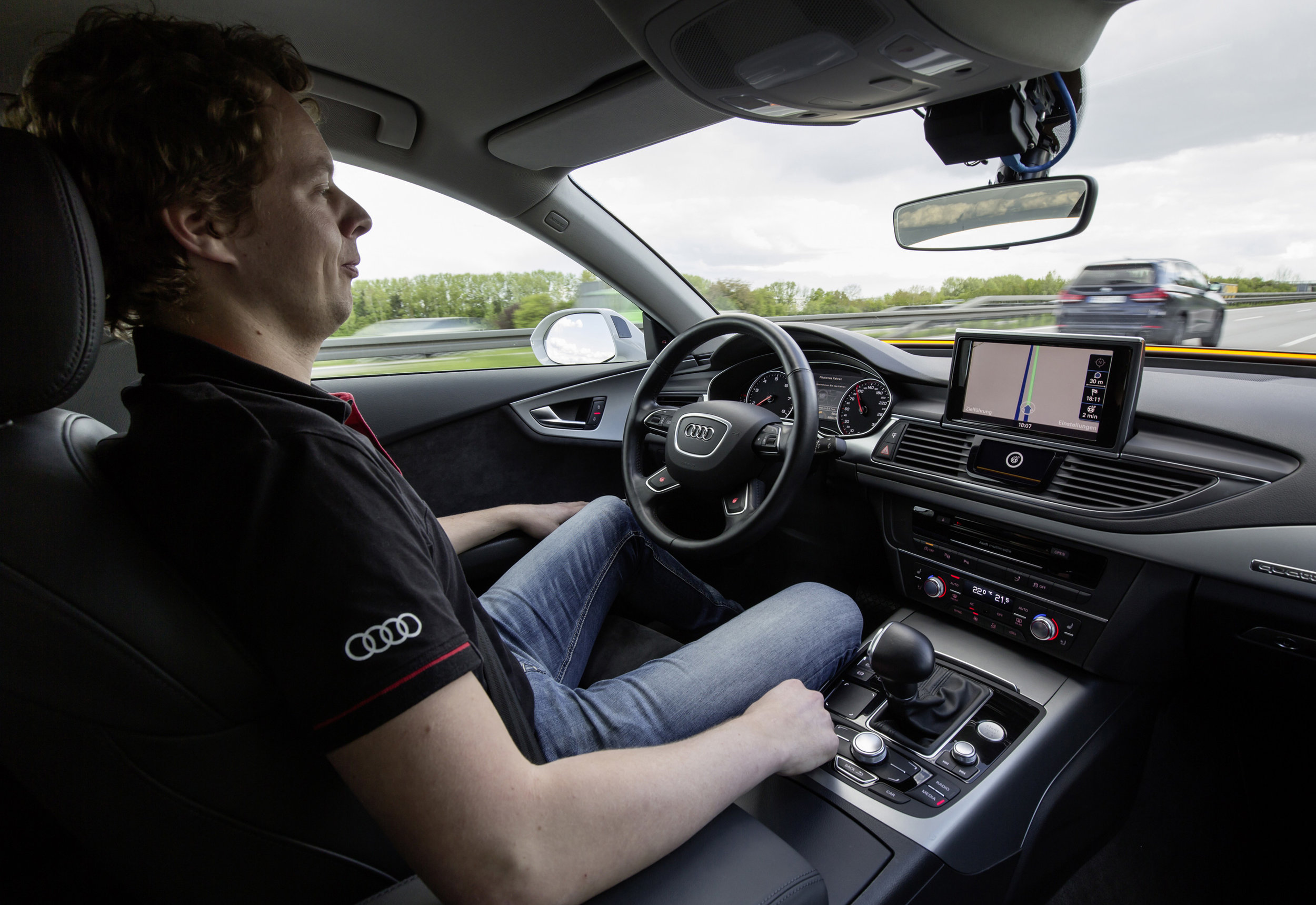
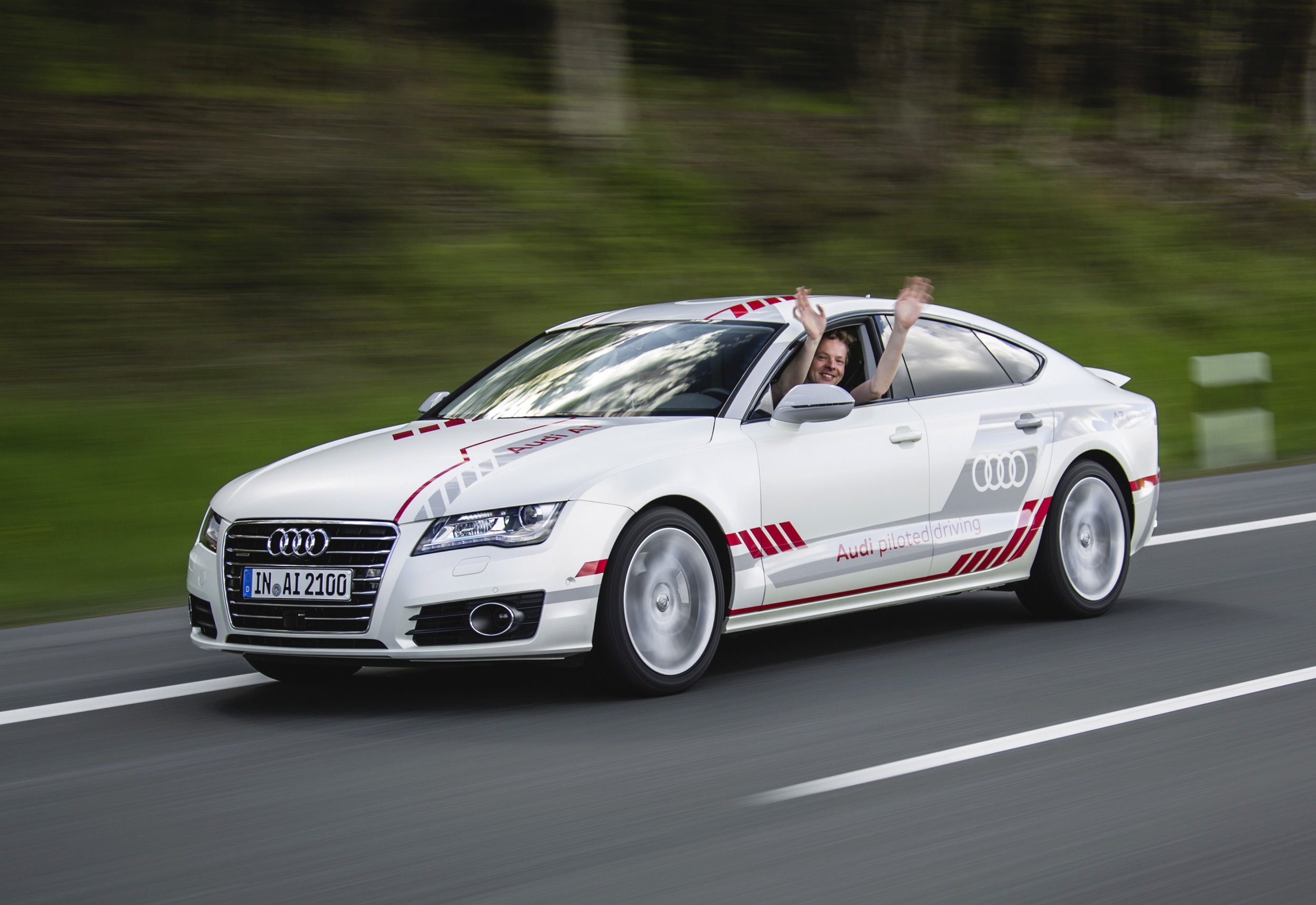
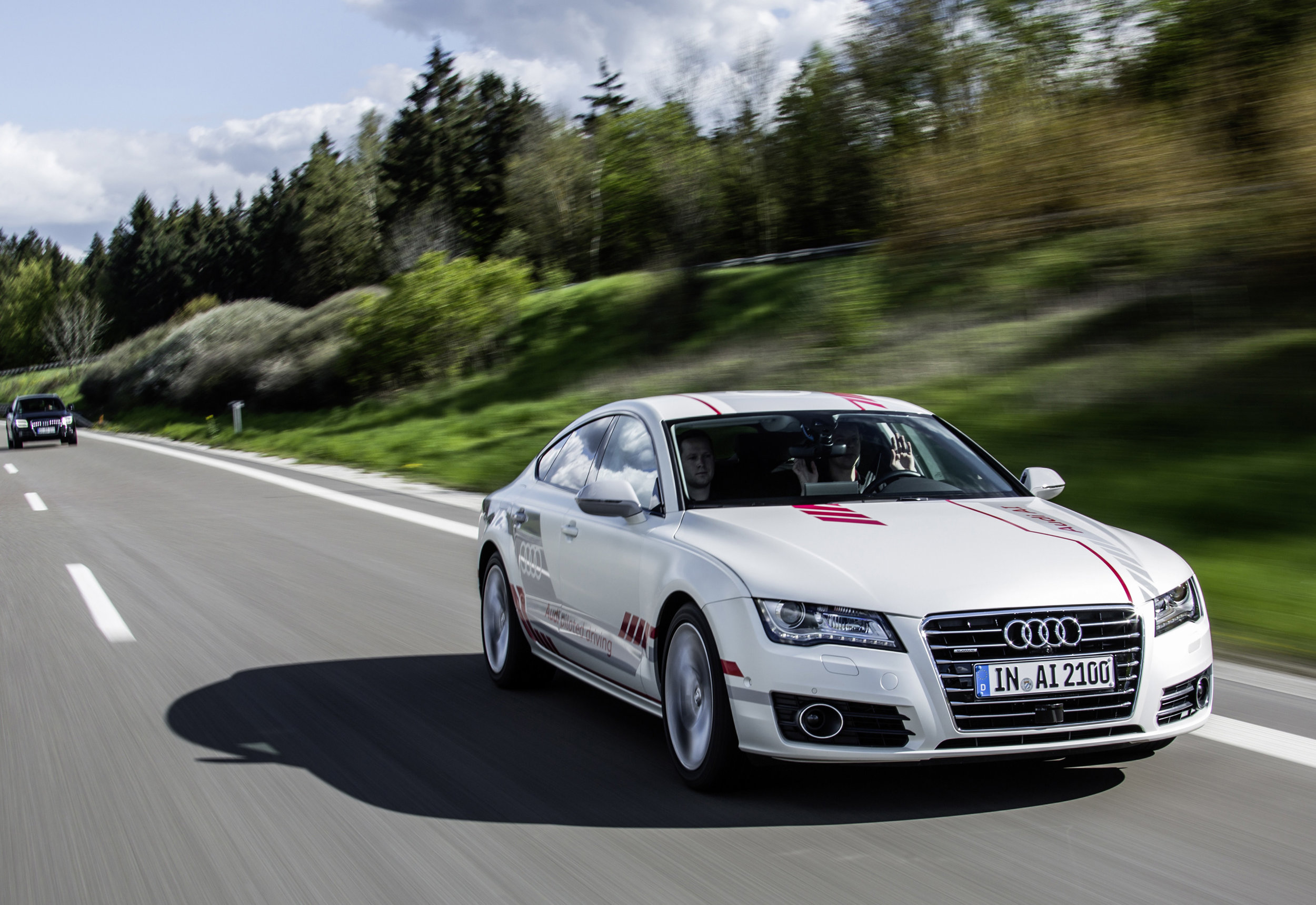
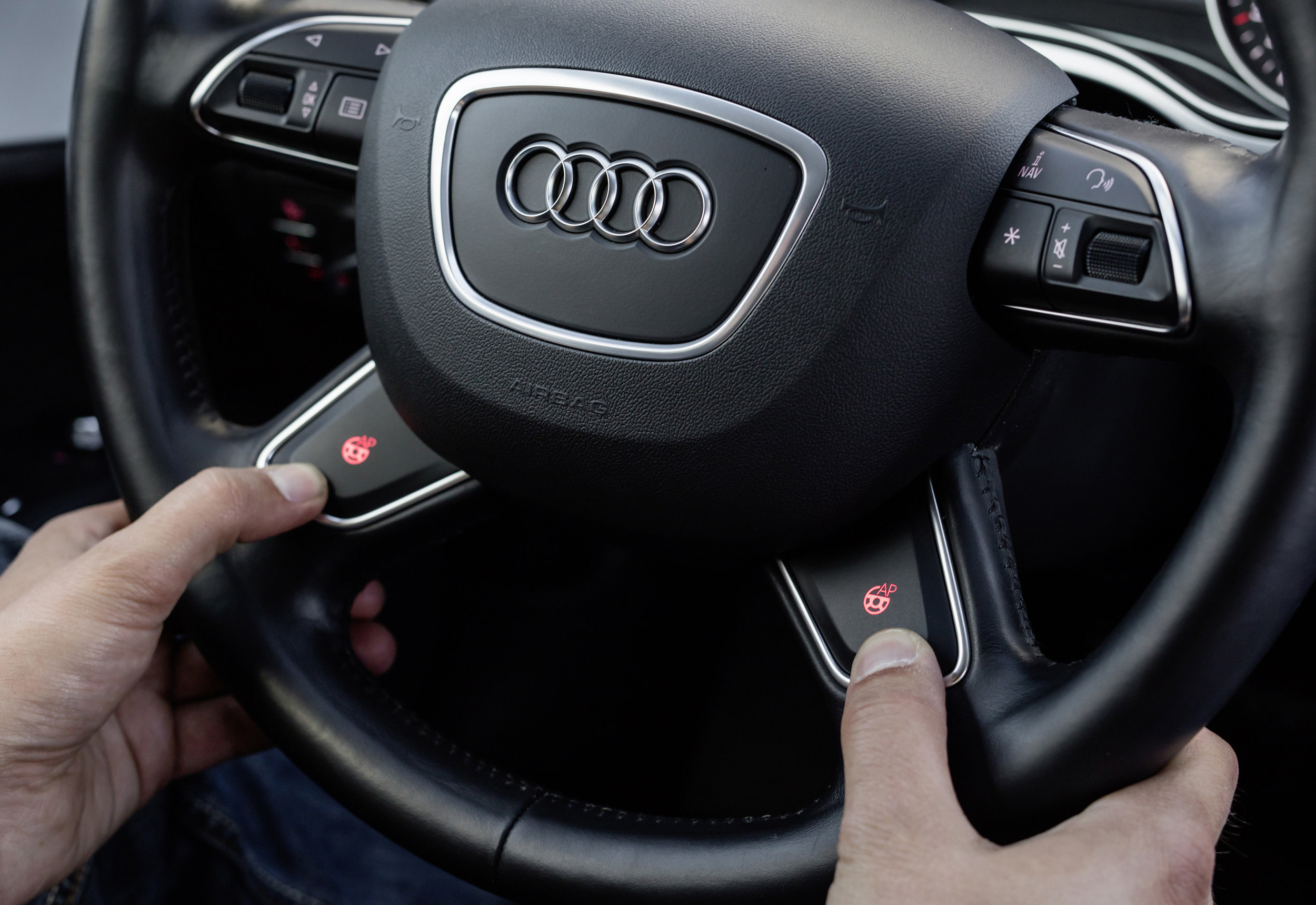
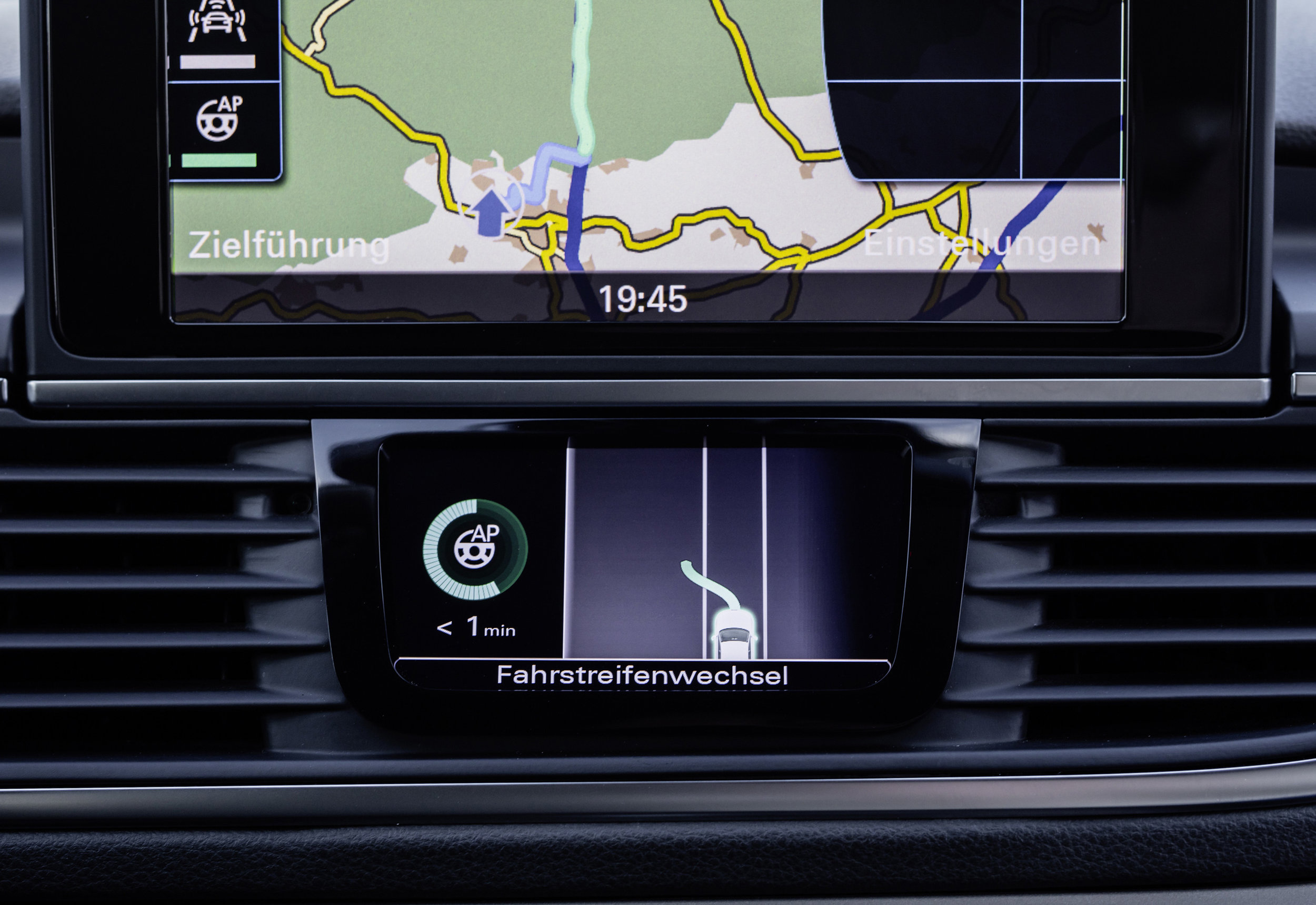
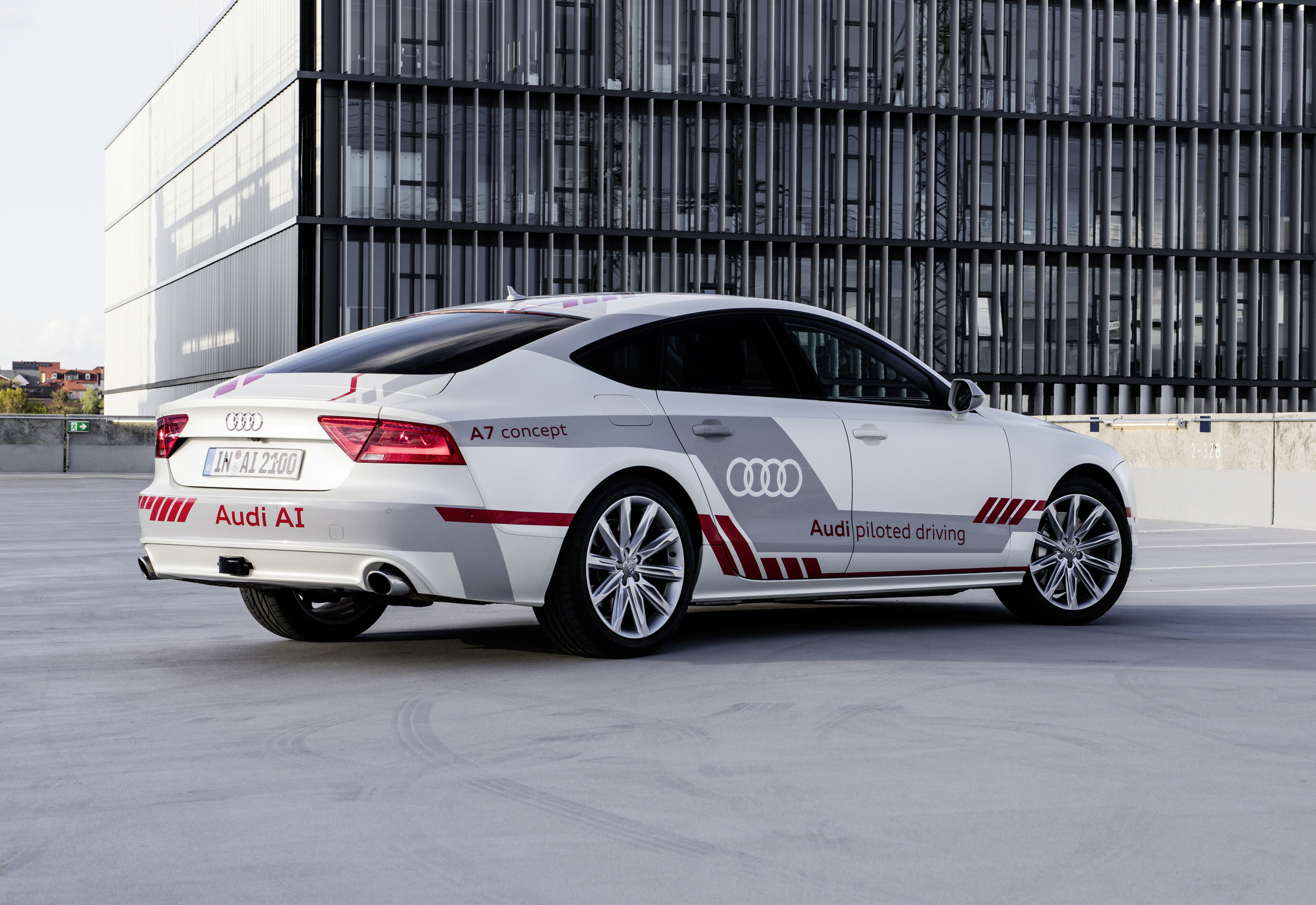
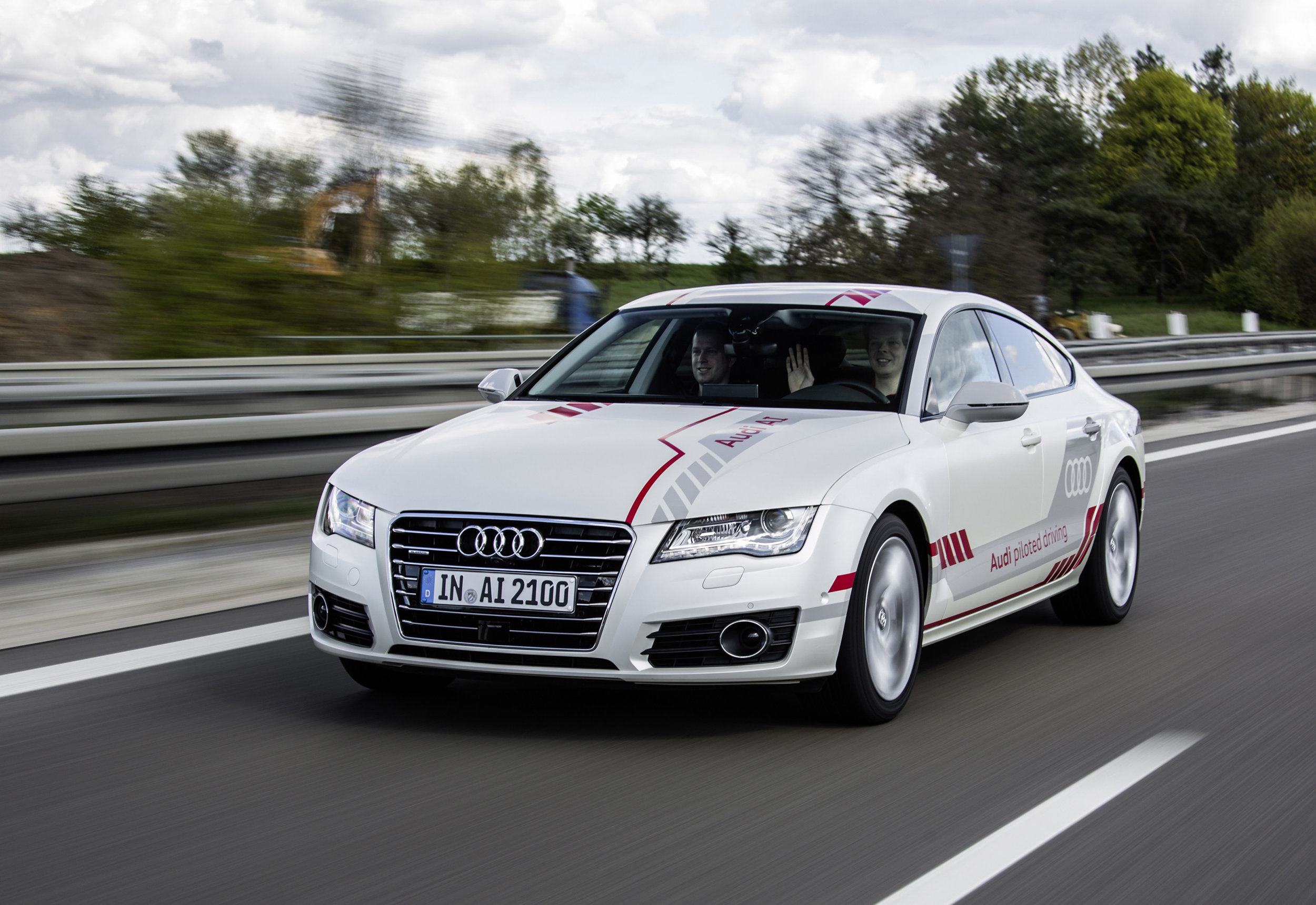
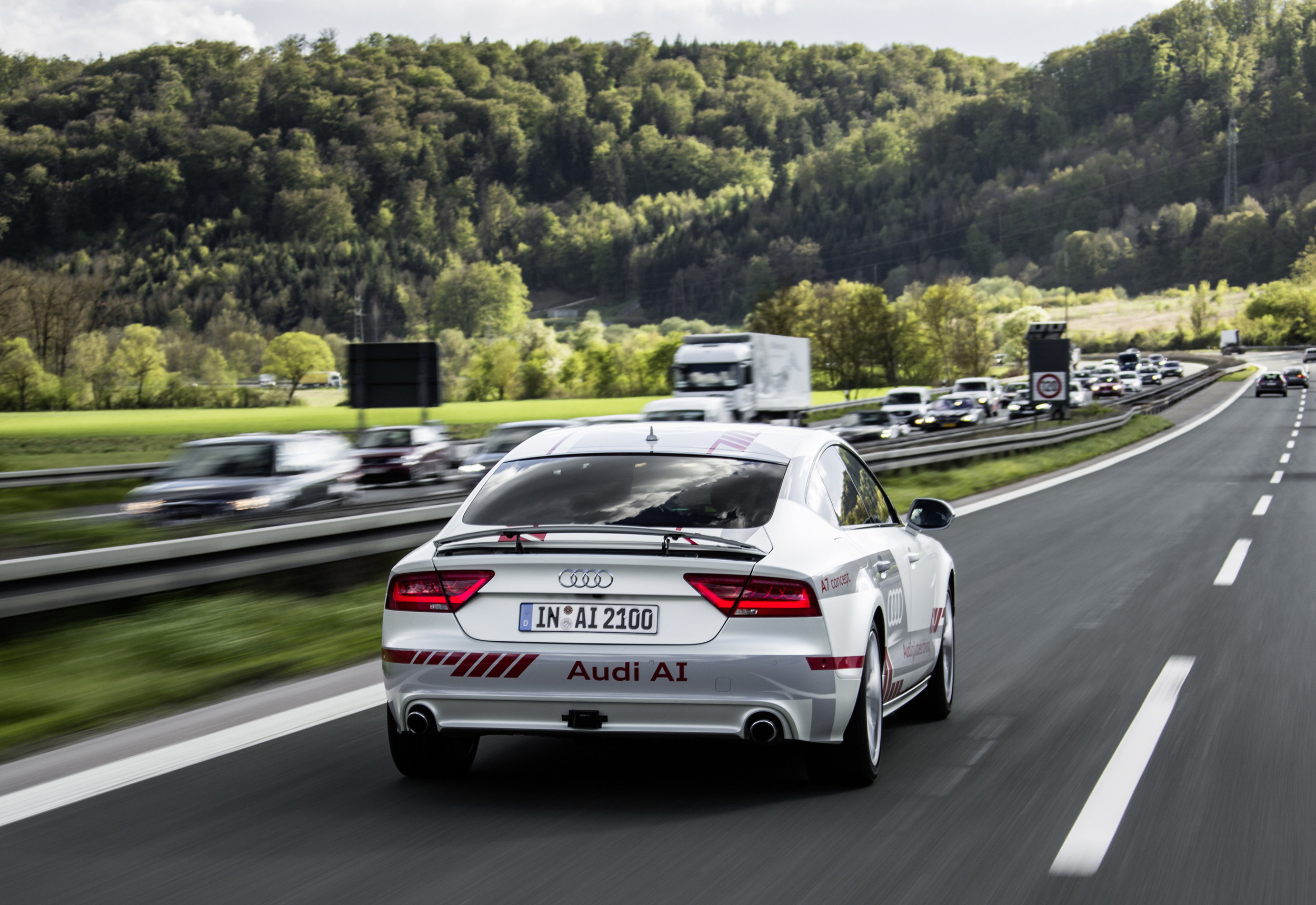
One year after the launch of the 'Digital Motorway Test Bed', Audi engineers have presented new technologies for piloted driving and Car-to-X communication at the German Federal Ministry of Transport.
The Digital Motorway Test Bed is a joint initiative between the Federal Ministry of Transport and Digital Infrastructure, the Free State of Bavaria, the automotive and supply industry as well as the IT sector. On several sections of the A9 between Nuremberg East and Munich North, transmitters and sensors connect cars with their surroundings as well as with other vehicles.
Audi is involved in six projects – three of which focus on structural measures and the remaining three on communication technologies. The focus is on online variable message road signs and infrastructure measures with Audi testing solutions aimed at delivering enhanced safety and convenience in piloted driving in real traffic conditions.
“As part of the Digital Test Bed, Audi is participating in development activities to make the autobahn infrastructure even more reliable and therefore support piloted driving,” remarked Alejandro Vukotich, Head of Development for Automated Driving at AUDI AG. “Among other things, the idea is to modify the materials used for marker posts and guardrails so that they reflect radar waves better than at present – from a greater distance, and in snow and rain too. Other aims include car sensors that will in future detect the road markings more easily. Special supplementary markings at the roadside will enable test vehicles to localize themselves by camera in relation to their road marking with very high precision. The first prototypes for these projects will soon be installed.”
The “Car2Infrastructure” communication project connects the car with variable message road signs that are online. These signs alert drivers by mobile connection to speed limits, traffic jams or lane closures, for example. As a first step, engineers have developed a universal interface with the display systems, which vary considerably from region to region. The information gathered is uploaded to the cloud via the mobile network, then transferred from there back to the test cars. This arrangement supplies the car directly with information on new traffic situations – an indispensable part of safe piloted driving.
Thanks to the future mobile communication technology LTE-V, the data transfer modules in the cars are also directly connected to each other, enabling car to car communication even in regions without mobile coverage. LTE-V also allows new safety functions such as black ice warnings and “platooning,” where piloted driving cars form an energy-saving convoy.
In the third communication project, two sections of the A9 are being surveyed with centimetre precision and objects such as bridges, signs and road markings are being defined. These findings are fed into the HERE HD Live Map, which is being permanently supplemented and updated.
Alejandro Vukotich, Head of Development for Automated Driving at AUDI AG, welcomes the findings obtained to date: “The ‘Digital Motorway Test Bed’ gives us the opportunity to help actively define the future of driving. Hand in hand with partners, we are able to test future technologies in this real traffic environment that we ultimately want to introduce into series production at Audi. The result is that we can perfectly synchronize our vehicle development work with the infrastructure.”
